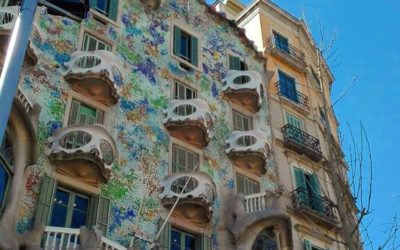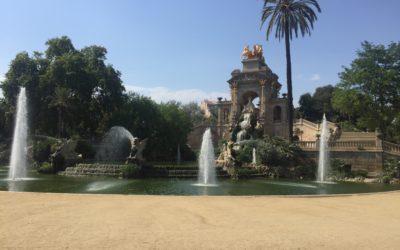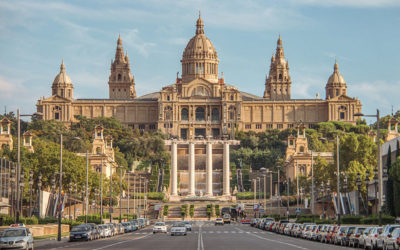When you visit Barcelona, one of the most interesting spots is La Rambla. It is rich in history and is one of the most popular spots on a tourist’s itinerary. Learning what makes the location special will make your trip even more exciting.
The History of La Rambla Barcelona
Recent history reveals the source of an established tourist site started as a ditch containing wastewater. The city wall extension project launched in 1377 redirected waterflow while creating a new street that became the foundation of Barcelona’s central hotspot. This particular section developed into the main site for Barcelona’s urban activity. Larger areas inside the site proved perfect for sportings events along with festivals. Multiple religious sites were constructed as part of the building development. The city maintains its essential historical elements despite war-induced damage since many of its initial facilities have endured through the passing years. Visitors can walk this area to experience firsthand the authentic Spanish cultural wealth and splendor that reside within the original structures.
The Essential Sights At Las Ramblas In Barcelona
Through its borders Las Ramblas serves as a metropolitan area which hosts multiple key tourist locations.
-
Plaça Catalunya Mercat de la Boqueria Columbus Monument
In Barcelona’s La Rambla at its bottom section stands the Columbus Monument reaching 60 m (197 feet) toward the sky. Barcelona’s Universal Exhibition of 1888 provided the occasion for building this element to celebrate Columbus’ discovery of the Americas. After his inaugural American voyage Christopher Columbus made his way to Barcelona where he delivered his report to King Ferdinand V and Queen Isabella I.
-
Placa Catalunya
Placa Catalunya operates as the main backbone hub for transportation throughout this region. An incredible fountain stands as a main attraction in this space. According to local tradition a person who drinks water from this historic site will inevitably come back to the same area. Shop and eat at El Corte Ingles then take the elevators to the top floor for amazing city views across the department store platform. During your visit you can purchase local merchandise including souvenirs.
-
Rambla del Estudis
This area first derived its name from the former University establishment where native Catalans often conduct local animal sales including birds, turtles, and puppies. Jesuit church Esglesia di Betlem stands at one end of this space. The main Jesuit school in the region began construction during 1553 within the original building. A destructive fire hit the building during 1671. Today’s church was erected in 1680. At present the parish helps needy individuals who reside within the red-light district.
-
Rambla de las Flores
This Spanish marketplace was named Rambla de las Flores because flower peddlers operate within its walls. Historically this area served as the sole location where citizens could buy flowers. Boqueria Market operates within this location. More than 800 stalls showcase Spanish cuisine on this route which invites you to explore the offerings. You will encounter delightful aromas alongside vibrant displays along with diverse fresh culinary creations when you turn at each corner. Throughout history market activity evolved from a casual meeting in the 1200s to become the popular destination it remains today. Walking beneath the metal roof you gain weather independence and comfort during all outdoor conditions.
-
Rambla dels Caputxins
Looking for art experiences leads naturally to this venue. Many tourists observe both performers and living statues during their visits along the streets. You will discover rare artwork availability for purchase at this outstanding marketplace. You can buy show tickets at Opera de Gran Teatro Licau while showing interest in the performance.
-
Rambla de Santa Monica
The seafront location of the Ramblas’ bottom part remains accessible from its south end. The Barri Xines district grew famous as a red-light district when it was known as the backstreets. The area underwent cleaning projects during modern times. Throughout daytime hours artist stands set up shop in this public area to draw portrait sketches for enthusiasts. The Columbus Monument points at America while the royal shipyards stand nearby. The Maritime Museum of Barcelona resides in this location today. The Les Drassanes Reials shipyards have survived throughout history among the most comprehensive facilities of their type. Almost all others from this era have succumbed to destruction. The entity received designation as a “Cultural Site of Natural Interest.” Look for the wax museum and Teatre Principal if you’ve come with family.
Las Ramblas shows its unique spirit throughout every corner. The building architecture functions as a gateway to study its past greatness. Your experience of Spanish cultural traditions will reach authenticity when you visit the city. Among many other things the places mentioned here represent a sample of experiences people can still enjoy. Take time to enter each attraction the area holds when you are in this section. You will experience community cohesion while learning how historical events in the city formed contemporary times. Take our Original Free Barcelona Walking Tour or the Original Barcelona Free Bike Tour to discover La Rambla Barcelona while seeing an offbeat side of tourism and exclusive sites from the Original Barcelona Free Alternative Tour.
Table of Contents




